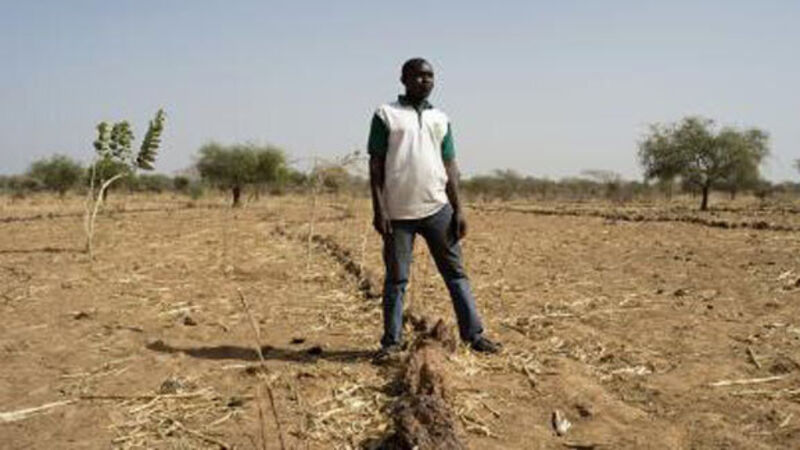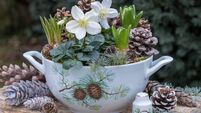Cultivation of the soil is our key to good crops

WHEN we are standing on the ground, we are really standing on the roof top of another world — this explanation sums up the importance of soil and indicates why the UN General Assembly has declared 2015 as the International Year of Soils (IYS).
Soil health is key to food security and similar to the rainforest, savanna or a sea estuary, soil is an ecosystem in which thousands of different organisms interact and make up the global cycles that enable life on earth. But it needs protection too.
Whether you are cultivating acres of open ground, square metres of a garden or growing in containers, understanding your soil and knowing how to build it up really is the key to producing great crops.
To quote one of my hero’s, Lady Eve Balfour (1899-1990), founder of the UK Soil Association: “The health of soil, plant, animal and man is one and indivisible.”
There are many ways of preparing soil, from not digging to double digging and single digging or to simply building raised beds.
There are also many ways of improving soil and if you take the time to nurture it and build it up with bulky organic materials, you will reap the rewards and be nurtured by healthy strong crops while also doing your bit for the planet.
Feed the soil— not the plan is at the core of organic growing and it encompasses Lady Balfour’s holistic approach to soil cultivation, underlined by the knowledge that a healthy soil produces healthy plants which in turn produce healthy people.
However for most home growers, obtaining sufficient bulky organic matter to feed the soil is often the most difficult aspect of organic gardenin. However, some potential soil food or soil amendments include:
Homemade compost is one of the best soil amendments as it recycles the nutrients from our kitchen and garden and returns them back to the earth.
Composting is an essential life skill for urban and rural dwellers and there are some great initiatives around the country such as the Lifetime Lab in Cork which provides composting demonstration areas.
As there are many different types of composting systems (eg, tumblers, piles, worms, green cone, pallet bin, etc), it can be difficult to figure out which one is best for you and how to use it properly.
The Lifetime Lab composting demonstration area, developed as a partnership between the Environmental Protection Agency’s (EPA) Stop Food Waste Programme and Cork City Council, aims to show people how different composting systems work and to offer more information on reducing food waste and composting (stopfoodwaste.ie).
That said, no matter how successful your compost heap is, it can be difficult to have enough compost to supply all your soils needs.
Thankfully there are now a number of waste-recycling companies around the country, including Local Authority Initiatives, that shred, compost and bag garden waste and sell it as a soil conditioner at a better price than bagged compost alternatives.
Check out CRÉ, the Composting Association of Ireland (www.cre.ie) to locate the waste-recycling site most convenient to you.
Traditionally, families in Ireland lived on small-holdings with a mixed range of stock supplying food for the kitchen and a valuable mix of manure for field fertility.
Times have changed and now well-rotted manure is like gold dust and for urban and stock-free gardeners, it pays to make friends with a local farmer or stables.
Manure should be composted for at least three months before incorporation into the soil. Be warned, it can be difficult to work in by hand over a large area with lots of extra wellie required to break up clods, but your soil will thank you for this.
Some other soil amendments
There are a range of other organic materials that will also feed your soil and potential alternatives to compost and farm yard manure include:
has been used to enrich Irish soils for centuries. You should only use washed-up seaweed and apply it as mulch or add it to compost heaps.
There is much debate as to whether seaweed should be washed before applying to beds to prevent salt build up in soil. Chances are the Irish rain Gods will have the job done on the beach before you get the hose out.
My plants have never suffered any ill-effects from directly applied seaweed. You can also buy seaweed dust and seaweed meal in good garden centres which can be sprinkled on beds and raked into the soil before planting.
refer to the many plants that can be grown and dug back into soil to protect soil structure and to increase its fertility and humus content. Grass cuttings are rich in nutrients and can be used as mulch, mixed with compost or forked into the top layer of soil.
are ideal for mulching and will slowly decompose into the soil containing a balance of nutrients.
Likewise leaf mould made from composted fallen leaves in the autumn is an excellent soil conditioner.
can be cut and applied when wilted as mulch. Along with making liquid feeds, comfrey is well worth growing for this purpose.
Did you know that every small handful of soil contains millions of living micro-organisms which forms the skin of topsoil that covers the earth?
The soil ecosystem is one of the most complex and diverse ecosystems on earth and without topsoil, life as we know it could not exist. So remember to feed your soil and it will repay the investment in spades.













